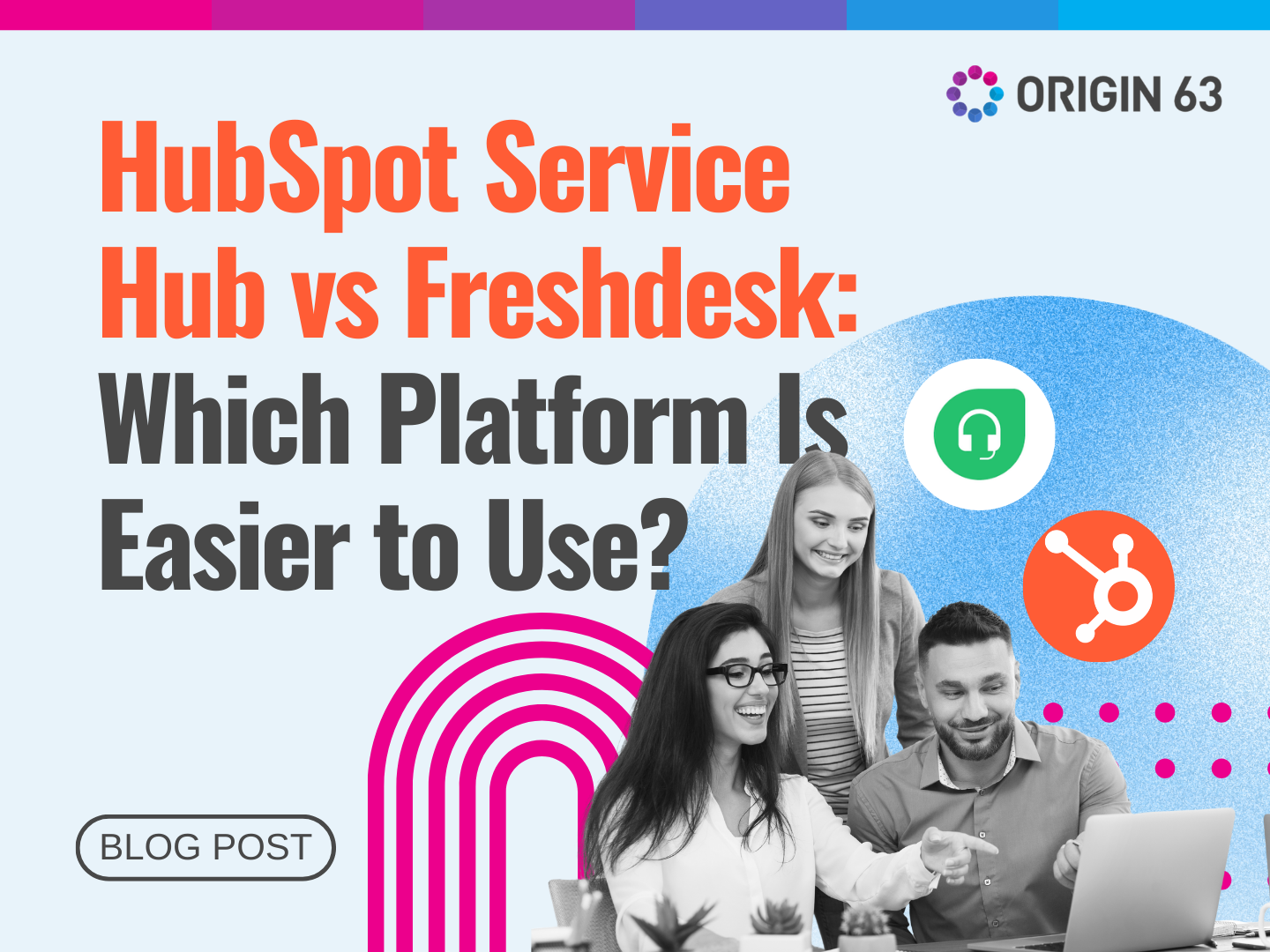Spotting potential issues helps you stop churn before it happens. Health scores can be the right tool for that, but how do you use it effectively?
Health scores are numerical indicators that show how well a customer is doing with your product or service, especially in SaaS businesses. They help you understand which customers are thriving and which might be at risk of leaving.
This blog will provide practical tips on how to make the most of both the quantitative and qualitative data you get from health scores. We'll focus on using HubSpot's Customer Success Workspace to improve your customer success strategies.
Understanding Customer Health Scores for Better Success Management

Health scores are like temperature checks of your customer's success with your product. Typically ranging from 0 to 100, these scores help you gauge how well each customer performs with your solution.
A high score means the customer actively engages with your product and finds value in it. On the flip side, a low score might mean a customer struggles or doesn’t see the benefits they expected.
Health scores are important because they:
- Help you identify at-risk customers before they churn
- Allow you to prioritize your efforts on customers who need attention
- Highlight opportunities with satisfied customers (like upsells or case studies)
- Provide real-time insights into customer behavior and product usage
These actions can help you increase retention, impacting your bottom line. Research shows that just a 5% increase in customer retention can boost profits by 25% to 95%
HubSpot simplifies the use of health scores for customer-centric businesses. Their Customer Success Workspace allows you to customize health score calculations based on factors that matter most to your business.
This might include product usage, support interactions, Net Promoter Score (NPS), contract value, or recent activity.
Integrating health scores into your customer success strategy with HubSpot lets you spot trends and take action, focus on the metrics that show customer success for your specific product, and proactively address issues before they lead to churn.
You don’t want high health scores alone—you want to use these scores to take action. Your end goal is better customer outcomes and long-term success with your product.
Quantitative Metrics: The Data-Driven Backbone of Health Scores
When you start measuring health scores, you'll encounter various data types. The most straightforward are quantitative metrics. You can measure and track these numerical values over time, giving concrete insights into how customers interact with your product.
But numbers alone would do nothing if we can't derive meaning and take action based on those numbers. Here are three tips to make the most of quantitative metrics from health scores.
Tip 1: Track Product Usage for Actionable Insights

First and foremost, you should start tracking the data. With health scores, you can monitor different aspects of customer behavior, such as login frequency, feature adoption rates, or time spent in the application.
Product usage like these examples are particularly important because they directly reflect how much value customers get from your solution.
High product usage often correlates with customer satisfaction and success. Closely monitoring how customers use your product helps you identify your power users, understand which features are most valuable, and spot any customers who might be struggling.
For example, you notice that customers who use your project management tool's collaboration features at least three times a week have higher satisfaction rates and are more likely to renew their subscriptions. You’ll know that collaboration features are important in measuring health.
Actionable Tip: Use HubSpot's CRM to monitor product usage frequency. Track high-value behaviors (e.g., feature utilization or daily logins) to identify your power users.
This information can help you replicate success across your customer base and provide targeted support where needed.
Tip 2: Use Renewal Rates to Gauge Long-Term Satisfaction
While product usage gives you day-to-day insights, renewal rates offer a broader perspective on customer satisfaction. High renewal rates mean customers see ongoing value in your product and are willing to keep investing in it.
Tracking renewal rates can give you a sense of your product's long-term viability and your customer's overall satisfaction. Changes in renewal rates can alert you to potential issues or opportunities in your customer base.
For instance, you might notice that customers who receive regular product updates and personalized check-ins have a 20% higher renewal rate than those who don't.
Actionable Tip: In HubSpot, set automated workflows to monitor contract renewals and subscription terms.
A steady renewal rate signals customer contentment, while lapses hint at potential issues. You can proactively reach out to at-risk customers or celebrate and learn from successful long-term partnerships.
Tip 3: Analyze Support Ticket Frequency to Identify Pain Points

Support ticket frequency can also provide valuable insights into your customers' experience. While some support interaction is normal, an unusually high number of tickets might indicate that a customer is struggling with your product.
Analyzing support ticket data can help you identify common pain points, improve your product, and provide proactive support to prevent customer frustration.
For example, you might discover that new customers who submit more than five support tickets in their first month are 50% more likely to churn. This insight could lead you to improve your onboarding process or offer additional training to these at-risk customers.
Actionable Tip: Use HubSpot's Service Hub to log and categorize support tickets. Customers frequently submitting tickets may need additional assistance or proactive outreach.
This data can also guide your product development efforts, helping you address common issues and improve overall customer satisfaction.
Qualitative Indicators: Understanding the "Why" Behind Customer Behavior
You might think, "Health scores are all about numbers, right?" Well, not quite. While it's not immediately obvious, you can also glean qualitative insights from health scores.
These are the softer, more nuanced aspects of customer behavior that tell you what your customers are doing and why they're doing it.
Qualitative indicators tell the story behind the numbers. They give context and help you understand the emotions, opinions, and experiences driving your customers' actions.
This might include customer feedback, support interactions, or survey responses. Here are two more tips to help you maximize your qualitative data.
Tip 4: Use NPS and CSAT Scores to Measure Sentiment

Your customers want you to understand them deeply. 63% of consumers and 76% of B2B buyers expect businesses to understand their needs and expectations.
Net Promoter Scores (NPS) and Customer Satisfaction Scores (CSAT) are ways to learn what customers think about your product. These metrics give you a direct line to your customers' feelings and opinions.
NPS asks customers how likely they are to recommend your product to others on a scale of 0 to 10. Customers are then categorized as Promoters (9-10), Passives (7-8), or Detractors (0-6).
The NPS is calculated by subtracting the percentage of Detractors from the percentage of Promoters.
CSAT, on the other hand, measures customer satisfaction with a product, service, or interaction. It typically uses a 5-point scale ranging from "Very Unsatisfied" to "Very Satisfied."
So, how do these relate to health scores? They give you a direct line to your customers' feelings and opinions, which can be incredibly valuable for predicting future behavior.
High NPS or CSAT scores often correlate with higher overall health scores and can be early indicators of customer loyalty and potential growth.
Actionable Tip: Leverage HubSpot's survey tools to gather NPS and CSAT scores. Send out these surveys periodically to capture how your customers' sentiments evolve.
For example, you might notice that customers who consistently give you high NPS scores tend to have healthier overall scores. Or maybe you spot a trend where CSAT scores dip right before renewal time. These insights can help you predict and prevent churn before it happens.
Tip 5: Conduct Sentiment Analysis on Customer Feedback
Your customers are always talking to you through support tickets, emails, chat logs, you name it. 79% of customers are willing to share personal information if it leads to interactions where they feel immediately recognized and understood. But are you listening?
Beyond simply reading their words, it’s essential to understand the emotions and sentiments they convey. This is where sentiment analysis comes in.
Sentiment analysis is a technique that uses natural language processing (NLP) and machine learning to identify and extract subjective information from text. Simply, it helps you understand the emotion behind your customers' words.
For health scores, sentiment analysis adds emotional context to your quantitative data. While usage metrics tell you what customers are doing, sentiment analysis helps you understand how they feel about it.
This emotional insight indicates customer satisfaction or frustration and can often highlight potential problems before they appear in your quantitative data.
Actionable Tip: Integrate feedback tools with HubSpot to perform sentiment analysis on qualitative responses. This data can enrich your health scores by adding emotional weight to the feedback.
Let’s say you notice that a customer who usually responds with short, positive emails suddenly sends a lengthy, frustrated email.
Even if their usage metrics look fine, this could be an early warning sign of dissatisfaction. Incorporating this sentiment data into your health scores gives you a more holistic view of your customer's experience.
Integrating Quantitative and Qualitative Data for Comprehensive Insights

Integrating quantitative and qualitative data is like assembling a puzzle. The quantitative data gives you the pieces—the hard facts about what's happening. The qualitative data helps you see the big picture—why it's happening and what it means for your customers.
Here's how you can make the most of this powerful combination:
- Look for correlations
Do customers with high NPS scores also use your product more frequently? Are your power users more likely to leave positive feedback? These connections can help you identify what drives customer success.
- Contextualize your metrics
If you see a drop in usage, don't panic right away. Check the qualitative data. Maybe it coincides with a holiday season, or customers are waiting for a new feature release.
- Predict future behavior
When you combine usage trends with sentiment analysis, you can often spot potential churn before it happens. If a customer's usage is steady but their sentiment is declining, it might be time for a check-in.
- Personalize your approach
Use the combined data to tailor your interactions with each customer. If you know a customer values quick responses (from their feedback) and uses your product daily (from usage data), you can prioritize their support tickets accordingly.
Continuously Refining Your Customer Health Score
Building an effective customer health score involves carefully tracking the right metrics—like product usage, renewal rates, and support ticket frequency—and assigning appropriate weight to each based on relevance.
You gain deeper insights into customer satisfaction and potential risks by customizing your health scores to reflect different stages of the customer journey. A successful health score is dynamic and adapts to changes in customer behavior and business priorities.
Review and adjust your health score metrics in HubSpot regularly as customer behaviors or business objectives evolve. This ensures that your health scores remain accurate and actionable, helping you stay proactive in customer success.
Maximize Your HubSpot Customer Success Workspace with O63
At O63, our team of HubSpot experts is here to help you make the most of your Customer Success Workspace. We'll help you implement effective health scores tailored to your specific business.
Our team can help you set up and optimize your HubSpot Customer Success Workspace, refine the right metrics for your health scores, train your team to interpret and act on health score data and develop strategies to improve customer success.
Let's work together to turn your HubSpot Customer Success Workspace into a powerful engine for customer retention and growth. Reach out today, and let's take your customer success strategy to the next level!













.png?width=90&height=90&name=Arrows%20Partner%20Badge-test%20(1).png)

